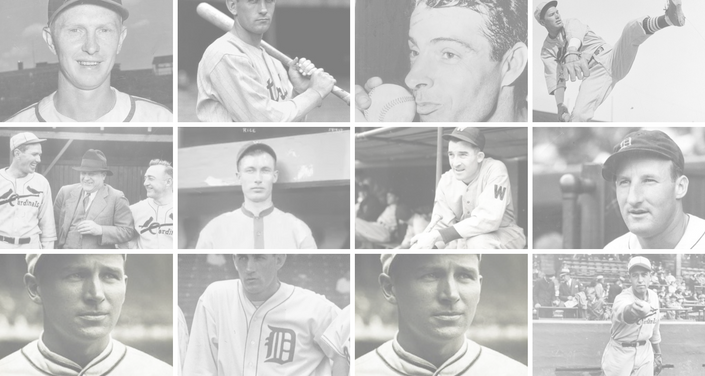MLB World Series Film 1943
Most of all, the Cards got tremendous seasons from fast-emerging outfielder Stan Musial, who in his second season as a big-league regular won his first NL batting title by hitting a robust .357, and pitchers Pollet (who entered the service in August), Max Lanier and Mort Cooper, who ranked 1-2-3 in the league in ERA at 1.75, 1.90 and 2.30, respectively.
The Yankees lost Joe DiMaggio, Phil Rizzuto and Red Ruffing because of military service but persevered, too. Charlie Keller and Joe Gordon still were on hand, and they provided power with 31 and 17 homers, respectively. First baseman Nick Etten, an offseason acquisition from the Philadelphia Phillies, proved a significant addition. He drove in a team-high 107 runs. Spud Chandler led the pitching staff with 20 wins. The result — in Joe McCarthy’s 13th season as Yankees manager — was a 13 1/2-game difference over second-place Washington in the American League.
As in the 1942 Series, the Cardinals fell in Game 1 of the 1943 fall classic. Chandler pitched seven-hit ball in a 4-2 triumph with McCarthy’s Yanks breaking a 2-2 tie in the sixth on singles by Frankie Crosetti and rookie third baseman Billy Johnson, a wild pitch by Lanier and another single by Bill Dickey.
The Cooper brothers, playing despite the death of their father earlier in the day, formed the St. Louis battery in Game 2. Mort pitched one-run ball for eight innings — the Yankees rallied for two runs in the bottom of the ninth — and wound up a 4-3 winner. Walker singled in three at-bats and laid down a sacrifice bunt. The hitting stars for the Cards were Marty Marion, who belted a third-inning homer with the bases empty, and Ray Sanders, who powered a two-run shot in the fourth.
Could the Cardinals possibly match their 1942 feat of wiping out the Yanks in four straight after losing the opener?
Brazle, a 29-year-old rookie who won 8-of-10 decisions in the regular season and boasted a 1.53 ERA, kept the Cards’ hopes alive for a repeat of ’42 — or at least of seizing the lead in this Series — by pitching masterfully through seven innings of Game 3. But the roof caved in on the lefthander in the eighth as the Yankees scored five times.
Johnny Lindell, a converted pitcher who was manning center field in the absence of DiMaggio, began the inning with a single and took second when center fielder Harry Walker misplayed the ball. Pinch-hitter George Stirnweiss bunted, and first baseman Sanders threw to third baseman Whitey Kurowski in an effort to cut down Lindell. The throw was in time, but Lindell crashed into Kurowski and jarred the ball loose. After a fly ball moved Stirnweiss to second, Crosetti was walked intentionally to load the bases. Johnson, a .280 hitter in his first season with the Yankees, proceeded to foil the strategy by clearing the bases with a triple. Gordon and Etten added run-scoring singles later in the inning, pushing the score to 6-2. Johnny Murphy worked a 1-2-3 ninth in relief of winning pitcher Hank Borowy, and the Yanks no longer had to fret about a rerun of the 1942 World Series.
Any fretting, in fact, soon went the Cardinals’ way. Marius Russo, a 5-10 pitcher for the Yankees in ’43, limited St. Louis to seven hits in Game 4 and doubled and scored the winning run in the eighth as New York won 2-1.
Now, the Cardinals were thinking survival. The Yankees, ever mindful of their ’42 fate, were thinking revenge. It would be Mort Cooper against Chandler the next afternoon.
By the end of Game 5, St. Louis was thinking about next year. The Cardinals collected 10 hits off Chandler but couldn’t score. The Yankees got a two-run homer from Dickey in the sixth. And that was it — 2-0, New York.
And that was it for McCarthy, who in turning the five-game tables on the Cardinals had managed his seventh and last World Series champion.


